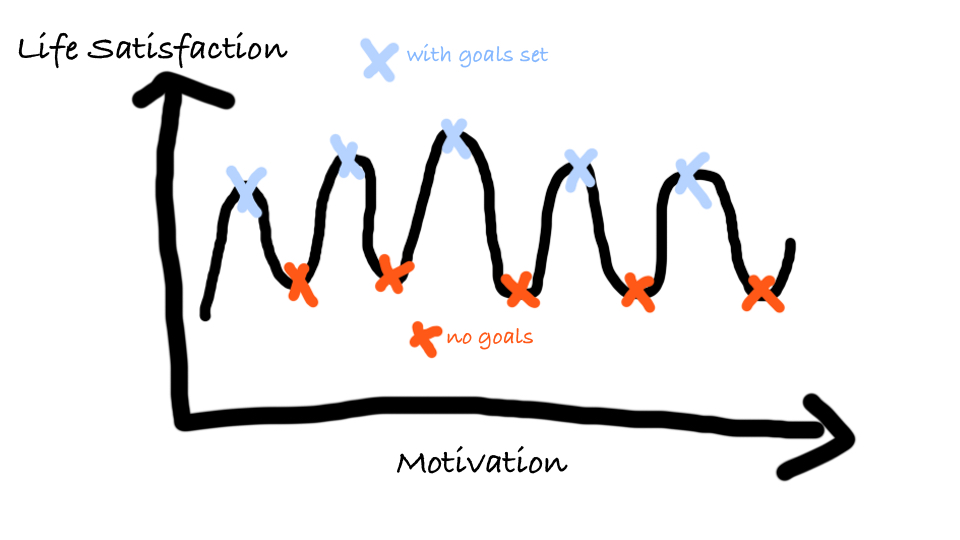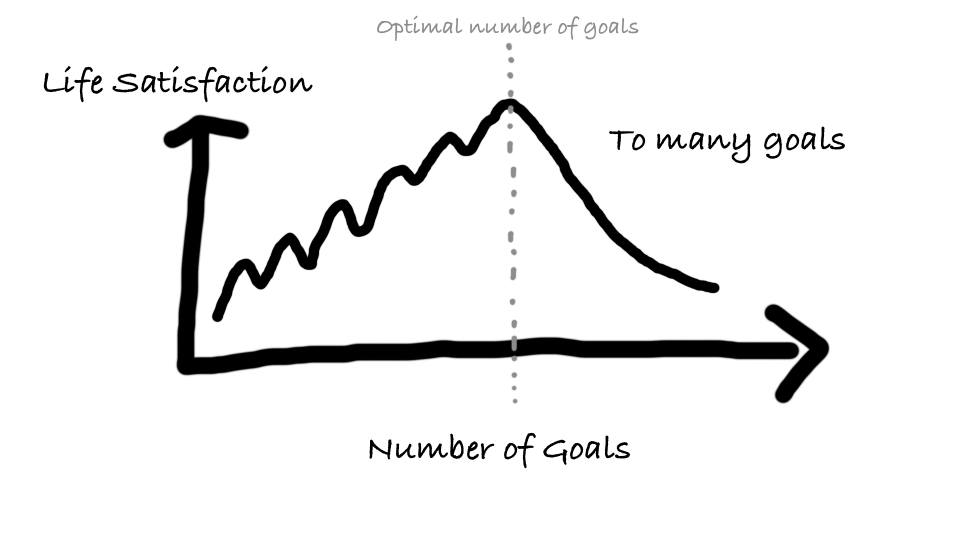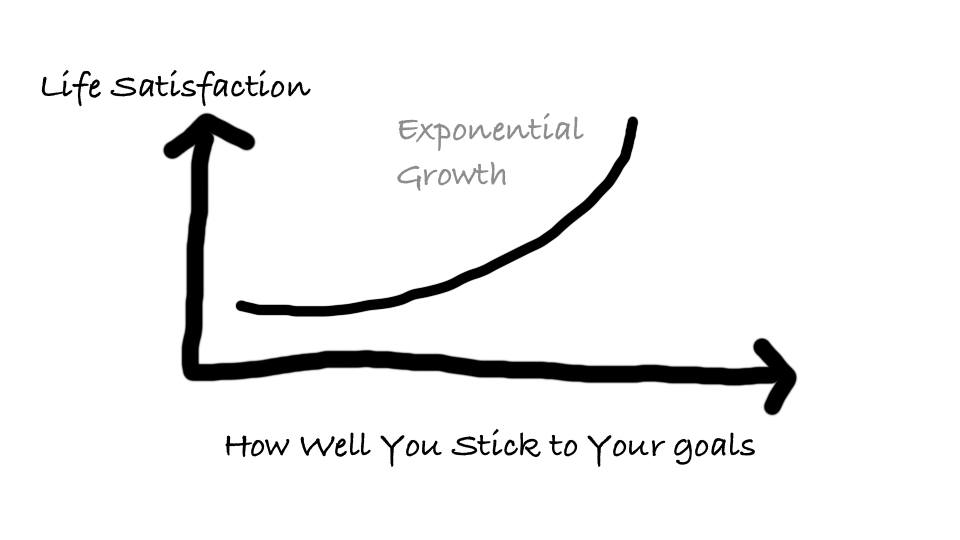We only live once. Who doesn’t want to make the best out of it? Below are three graphs that illustrate the important things we should have in our lives in order to be more satisfied.
Note that these graphs are used to illustrate some key ideas but not based on science or aligning with strict maths rules.
How Motivated Are You?
You may think that the more motivated someone is, the happier he/she is and hence life satisfaction would be greater. However, note that motivation is just about enthusiasm, it doesn’t include planning or setting goals, which are the fundamentally important steps to achieve something. When we’re motivated, we can be encouraged to perform better, or blinded by the excitement brought by it. When one is motivated but lacks reasoning and a clear mindset, he can end up being overwhelmed and in a worse situation than having little motivation. This is why the life satisfaction curve fluctuates so much in the graph. Either you’re highly motivated or rarely motivated, it’s hard to decide your level of life satisfaction.
Then, what’s the gap between motivation and life satisfaction? When goals are set, performance usually would be better, hence making us more satisfied. That’s why Lifehack always encourages users to add goals.
See the below graph about the relationship between number of goals and level of life satisfaction.
Number of Goals
Without clear goals, tremendous motivation wouldn’t be enough.
But does it mean we should have as many goals as possible? No, quantity isn’t always directly proportional to quality. There is an optimal number. Once that number is exceeded, we can be easily overwhelmed. We’ll lose focus and can only make small progress for each little goal. To fully untap your potential, focus is essential.
How many is the best? There is no absolute answer. It depends. Some people can only focus on one goal at a time, some can focus on five at a time.
Signs that you’re taking too few goals
- you don’t know your direction
- you can’t tell what you’re going to do next
- what you describe is very vague that you can’t remember well too
- you’re always thinking about the utopia and rarely take any actions
Signs that you’re taking too many goals
- you always feel that you have too little time
- you can’t remember how many goals you have
- you feel overwhelmed
Signs that you’re having the optimal number of goals
- you know what you’re working on and what you’ll work on next
- you can state and elaborate all your goals to someone very clearly
- you work hard and play hard
What’s even more important than the number of goals?
Before the “optimal number” line, the curve is still fluctuating, like the first graph. It is because there is one more important factor than the number. It is how well you stick to your goals, i.e. how you work towards them. Overall, the more goals we have (before reaching the optimal number), the more satisfied we would be with our life. But the level of satisfaction fluctuates a bit since goals being set does not mean goals being stuck with or achieved. Remember how many times you’ve written down a list of new year resolutions and forgotten them after a month? Don’t be frustrated though! That’s already a big step!
The Most Important Factor: How Well You Stick To Your Goals
The most important factor is the hardest to be fulfilled. At the same time, as you can see from the graph, the return is promising. The better we stick to our goals, the greater our life satisfaction is. Such growth is exponential as what we’ve achieved would help us advance more quickly and hence contributes to even larger increase in satisfaction.
However, it’s often hard to start by yourself. It’s always good to seek help and learn from others. Lifehack Goal Setting System is a hearty system that makes every small progress counts. By providing practical and useful articles, users would be guided through the process and achieve remarkable outcomes.
Note that how you set your goals is also extremely important. When the goals are too vague, they’re not much different from motivation, which means it’ll lead you back to the situation illustrated in the first graph. A good example is “I always stare at a screen and that hurts my eyes. I want to keep my eyes naturally healthy!“.
Maybe you would ask why it is “how well we stick to our goals” instead of “how many goals are achieved”. This is because goals mainly act as a roadmap/direction for us to follow through. As long as we make progress towards it, it is a kind of growth that will make us happier.
Setting goals
According to a study published in the Journal of Experimental Social Psychology, concrete prosocial goals can boost our happiness better than non-social ones. You may take this into account when setting your own goals.















































